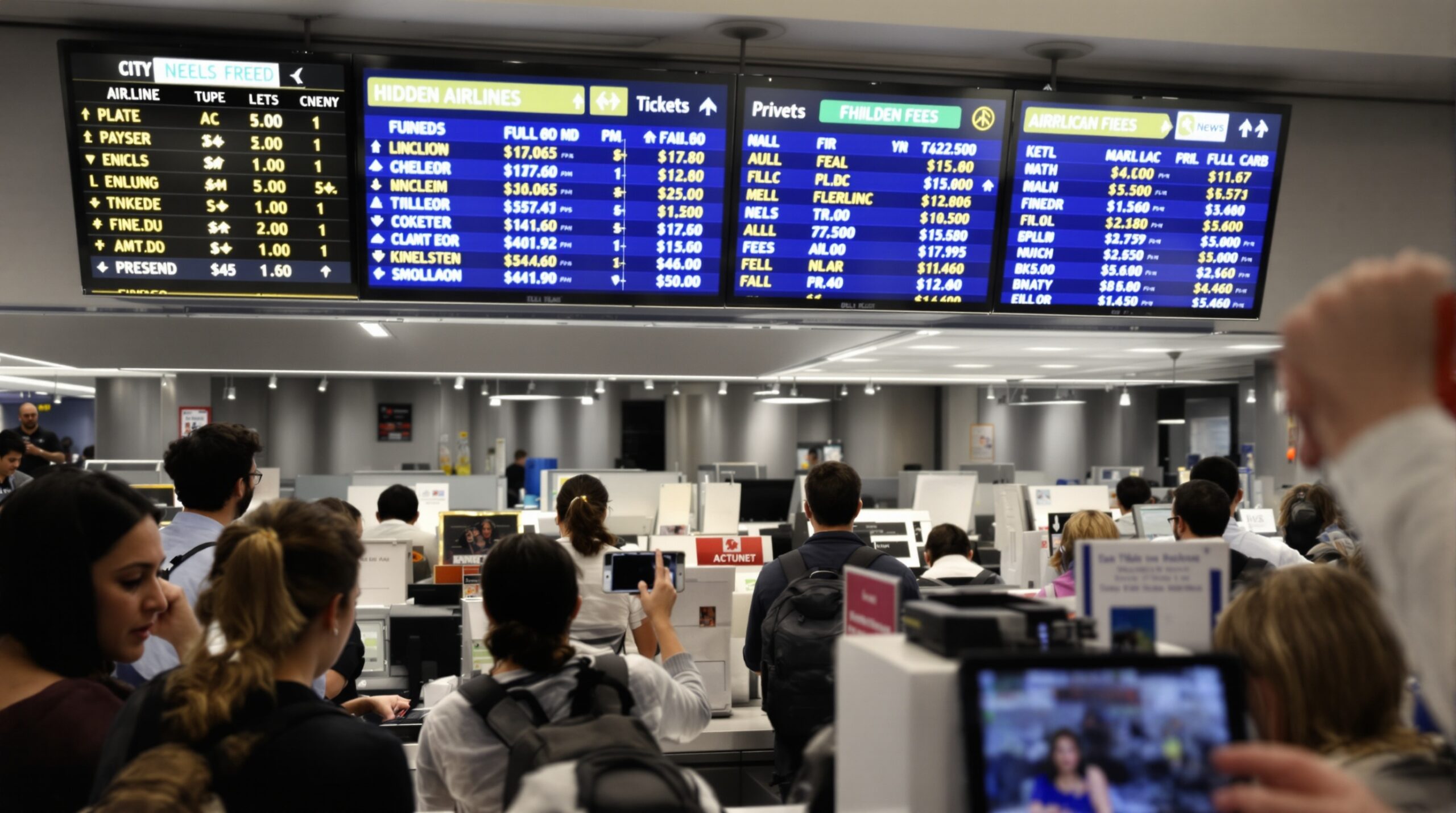Travelers booking flights often encounter confusion over ticket prices. A lack of transparency around airline fees has frustrated millions of passengers. Regulators are now stepping in to protect consumers from misleading practices and excessive hidden charges.
The Problem of Hidden Airline Fees
Airline tickets frequently appear affordable at first glance, but the final total can be much higher. Fees for baggage, seat selection, and onboard services are often not included in the advertised fare. Many travelers feel deceived when unexpected charges emerge at checkout or during their journey.
Several airlines label these costs as “ancillary fees” or “optional extras.” However, many passengers consider them essential to the travel experience. This mismatch between expectation and reality can damage trust in the airline industry.
For families and business travelers, the lack of upfront clarity is especially challenging. Booking for multiple people or managing business expenses becomes complex. This situation led to growing calls for greater transparency in fee disclosures.
Why Regulators Are Taking Action
Consumer protection agencies, such as the United States Department of Transportation (DOT), have seen a rise in complaints about hidden fees. Many travelers report that they cannot compare total costs across airlines. Airlines that display only base fares make real price comparisons difficult.
Regulators argue that travelers need clear information to make informed choices. The lack of transparency can mislead consumers and distort competition. Some smaller airlines, for example, may seem cheaper until all fees are added up.
This issue extends beyond the United States. The European Union and other regions have also scrutinized fee disclosure practices. They demand that airlines and ticket sellers provide accurate, upfront information to allow genuine comparison shopping.
Proposed and Enacted Rules on Fee Disclosures
Regulators seek to mandate comprehensive fee disclosures at the beginning of the booking process. In the U.S., the DOT has proposed rules requiring airlines and third-party sellers to reveal all mandatory fees before ticket purchase.
Under these proposals, airlines must display charges for checked bags, carry-ons, seat assignments, and ticket changes with the initial fare. This information must appear automatically, not just when customers actively search for it. The aim is to prevent sticker shock and eliminate hidden add-ons at the final payment screen.
Some airlines and industry groups object to the new rules. They argue that additional compliance costs may result in higher airfares. Others point out that customers who want extra services should pay for them.
Supporters argue that transparency does not dictate what airlines can charge. Instead, it ensures customers fully understand what they are paying for. The hope is an open marketplace where actual costs are clear from the start.
Related European Union Regulations
Europe already requires airlines to present the total price, including unavoidable fees, upfront. Base fares must not mislead travelers. Online booking platforms must show the true cost, including taxes and surcharges, before customers make decisions.
The EU has fined several airlines for breaching these requirements. Other countries, such as Canada and Australia, have adopted similar rules to strengthen consumer protection.
The Impact on Airlines and Consumers
Greater transparency in ticket pricing will likely transform the way airlines market their fares. Airlines may need to rethink advertising strategies and booking systems. They must ensure that all major fees are calculated and disclosed automatically.
Some airlines already provide robust fee transparency. Others, particularly low-cost carriers, rely heavily on ancillary services for revenue. They could see changes in consumer behavior if total prices are compared directly with full-service airlines.
For consumers, upfront fee disclosure offers three main benefits. First, travelers can compare true costs across different airlines. Second, families and groups can better anticipate travel budgets. Third, cases of bill shock or customer dissatisfaction may decrease significantly.
Transparency also supports competition among airlines, allowing innovative brands to stand out for honest pricing. The result may be stronger consumer trust and a healthier travel marketplace.
Challenges to Implementing Fee Transparency
Despite the advantages, some technical and logistical hurdles remain. Airlines operate different IT systems with varying capabilities. Integrating fee transparency into complex legacy systems takes time and resources.
Online travel agencies must update their platforms to show all required costs at the beginning of the booking journey. Coordination between airlines and travel agents becomes essential. Failures in information sharing can perpetuate consumer confusion, even with new regulations in place.
The global and fragmented nature of the aviation industry adds to these challenges. Standards must work across jurisdictions and languages. Regulators must also ensure that rules are enforced and adapted as new practices emerge.
Consumer Tips While Regulations Are Finalized
Until rules are universal, travelers should remain vigilant. Always review the airline’s fee schedule before booking. Consider the total cost rather than the initial headline price. Compare carry-on, checked luggage, seat selection, and change fees to budget accurately.
Look for clear breakdowns on the airline or travel agency website. Some booking platforms now allow fee-inclusive fare filters. Reading reviews and checking consumer forums can reveal hidden surprises for a particular airline or route.
The Future of Airline Pricing Transparency
Momentum continues to grow in favor of full transparency. As more countries enact and enforce disclosure rules, global standards will likely tighten. Airlines must adapt to an environment where hidden fees can no longer surprise customers.
Increased visibility of costs may drive innovation and customer satisfaction in the competitive airline sector. Regulators, airlines, and consumers all play a role in shaping a fairer and clearer ticketing experience going forward.
As regulations evolve, travelers may finally be able to trust that the price they see is the price they pay.

